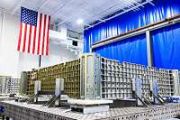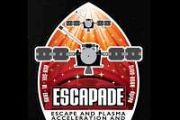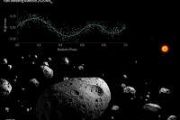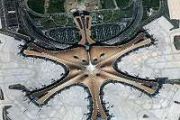Copernicus is the European Union's Earth observation programme coordinated and managed by the European Union (EU) in partnership with the European Space Agency (ESA), the EU Member States and EU Agencies.
It aims at achieving a global, continuous, autonomous, high quality, wide range Earth observation capacity. Providing accurate, timely and easily accessible information to, among other things, improve the management of the environment, understand and mitigate the effects of climate change, and ensure civil security.
The objective is to use vast amount of global data from satellites and from ground-based, airborne and seaborne measurement systems to produce timely and quality information, services and knowledge, and to provide autonomous and independent access to information in the domains of environment and security on a global level in order to help service providers, public authorities and other international organizations improve the quality of life for the citizens of Europe. In other words, it pulls together all the information obtained by the Copernicus environmental satellites, air and ground stations and sensors to provide a comprehensive picture of the "health" of Earth.
One of the benefits of the Copernicus Programme is that the data and information produced in the framework of Copernicus are made available free-of-charge to all its users and the public, thus allowing downstream services to be developed.
The services offered by Copernicus cover six main interacting themes: atmosphere, marine, land, climate, emergency and security.
Copernicus builds upon three components:
- The space component (observation satellites and associated ground segment with missions observing land, atmospheric and oceanographic parameters) This comprises two types of satellite missions, ESA's five families of dedicated Sentinel (space missions) and missions from other space agencies, called Contributing Missions,
- In-situ measurements (ground-based and airborne data-gathering networks providing information on oceans, continental surface and atmosphere),
- Services developed and managed by Copernicus and offered to its users and public in general.
Its cost during 1998 to 2020 are estimated at 6.7 billion euros with around €4.3bn spent in the period 2014 to 2020 and shared between the EU (66%) and ESA (33%) with benefits of the data to the EU economy estimated at roughly 30 billion euros through 2030. ESA as a main partner has performed much of the design and oversees and co-funds the development of Sentinel missions 1, 2, 3, 4, 5 and 6 with each Sentinel mission consisting of at least 2 satellites and some, such as Sentinel 1, consisting of 4 satellites. They will also provide the instruments for Meteosat Third Generation and MetOp-SG weather satellites of EUMETSAT where ESA and EUMETSAT will also coordinate the delivery of data from upwards of 30 satellites that form the contributing satellite missions to Copernicus.











































































